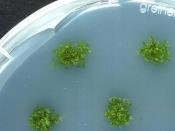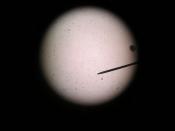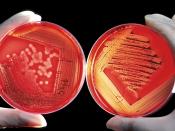Summary
This purpose of this experiment was for students to do the colony count methods, estimating the viable cell number of commercial active dried yeasts (ADY).
This experiment allowed the students to perform the plate count technique by serial dilution and two common methods, spread plate and pour plate to determine the colony forming unit (CFU) of yeasts
A ten-fold dilution is used in this experiment, the sample is diluted until it reached the
10-9 dilution. Plating for spread plate started from 10-5, 10-6, 10-7 and 10-8 dilution while for pour plate, it started from 10-6, 10-7, 10-8 and 10-9 dilution.
Having incubated inverted at room temperature (25oC) for 2 days, the viable cells for spread plate and pour plate were calculated.
The CFU/g obtained for spread plate and pour plate were 2.2 X 1010 CFU/g and 3.7 X 1010.the CFU/g respectively.
Introduction
Colony count methodology is one of the most accurate methods to determine the calculation of the organisms in a given sample.
It enumerates the number of actual live, viable cells in the sample that form colonies on a suitable agar medium. As the optimum medium and conditions varies for one sample to another, the colony count methods provide an estimate of the number of viable cells according to the medium employed, time and temperature of incubation. Each colony that appears on the agar plate arising either from a clump of cells or from a single cell is referred as a colony forming unit (CFU).
The sample used in this experiment is active dried yeasts (ADY). A serial dilution is performed to suspend the yeasts containing product in water so that the number of microorganisms per ml is small enough to be counted, when the sample is plated. Cells in overcrowded...



Suggestions
Hi, It's regarding the results and calculation part. There's some mistakes I think. For counting the cfu/g for the spread plate and pour plate, the dilution number should use the same. Which means that both should use 10^-8, whr ^ means to the power of. Therefore if use the correct dilution number to count the cfu/g, the spread plate's cfu is higher than the pour plate's cfu, which tally with the theoretical CFU.
7 out of 7 people found this comment useful.